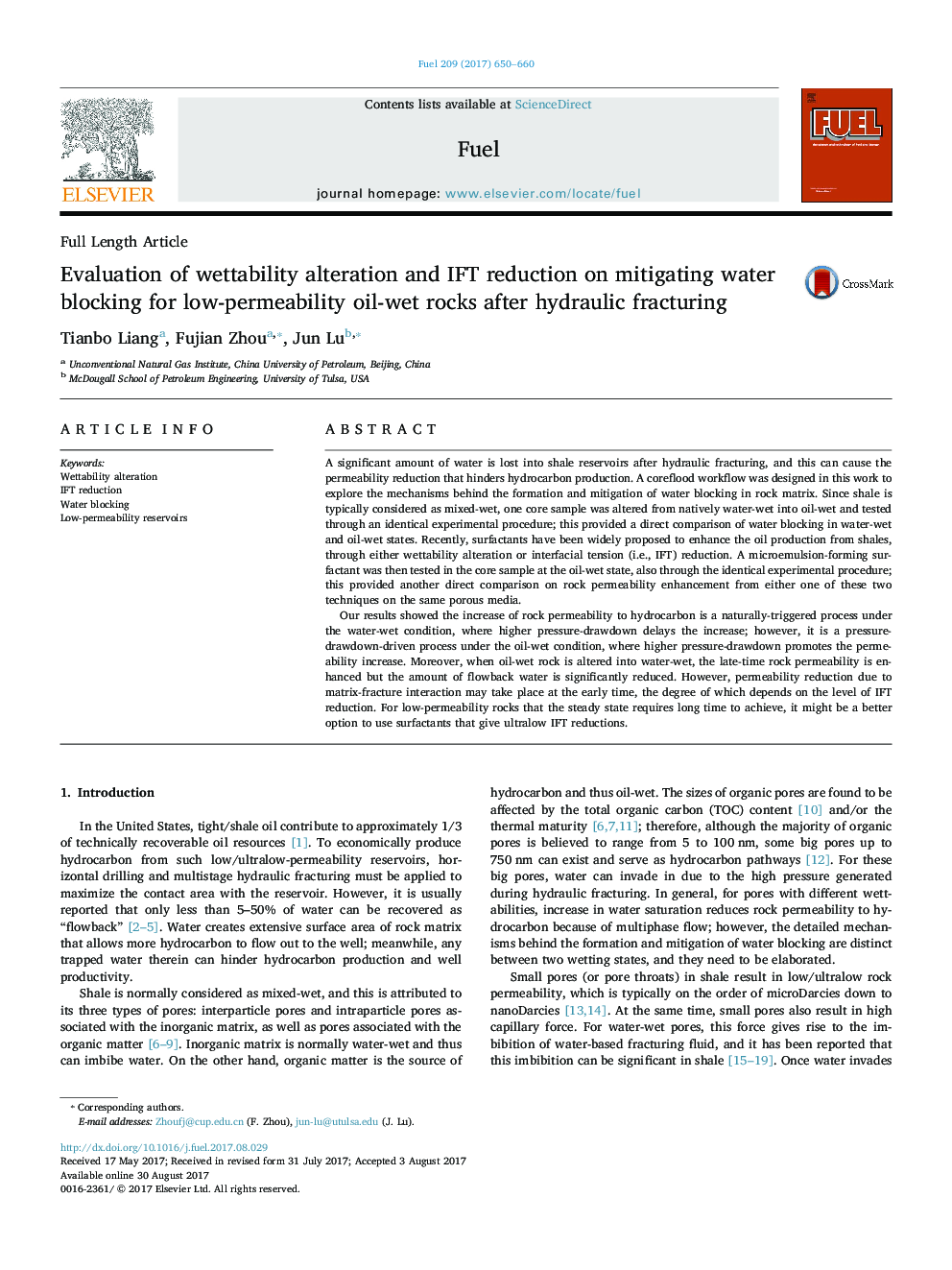| کد مقاله | کد نشریه | سال انتشار | مقاله انگلیسی | نسخه تمام متن |
|---|---|---|---|---|
| 6473992 | 1424955 | 2017 | 11 صفحه PDF | دانلود رایگان |

- Cyclohexanepentanoic acid can alter water-wet Indiana Limestone into oil-wet.
- Bonding of alteration agent on rock surface is not destroyed at its boiling point.
- 3-step coreflood simulates fluid invasion, flowback and hydrocarbon production.
- CT scanner monitors in-situ change of water saturation profile during coreflood.
- Enhancement from wettability alteration and IFT reduction is compared on one rock.
- Flowback amount cannot show the degree of permeability recovery after fracturing.
A significant amount of water is lost into shale reservoirs after hydraulic fracturing, and this can cause the permeability reduction that hinders hydrocarbon production. A coreflood workflow was designed in this work to explore the mechanisms behind the formation and mitigation of water blocking in rock matrix. Since shale is typically considered as mixed-wet, one core sample was altered from natively water-wet into oil-wet and tested through an identical experimental procedure; this provided a direct comparison of water blocking in water-wet and oil-wet states. Recently, surfactants have been widely proposed to enhance the oil production from shales, through either wettability alteration or interfacial tension (i.e., IFT) reduction. A microemulsion-forming surfactant was then tested in the core sample at the oil-wet state, also through the identical experimental procedure; this provided another direct comparison on rock permeability enhancement from either one of these two techniques on the same porous media.Our results showed the increase of rock permeability to hydrocarbon is a naturally-triggered process under the water-wet condition, where higher pressure-drawdown delays the increase; however, it is a pressure-drawdown-driven process under the oil-wet condition, where higher pressure-drawdown promotes the permeability increase. Moreover, when oil-wet rock is altered into water-wet, the late-time rock permeability is enhanced but the amount of flowback water is significantly reduced. However, permeability reduction due to matrix-fracture interaction may take place at the early time, the degree of which depends on the level of IFT reduction. For low-permeability rocks that the steady state requires long time to achieve, it might be a better option to use surfactants that give ultralow IFT reductions.
Journal: Fuel - Volume 209, 1 December 2017, Pages 650-660